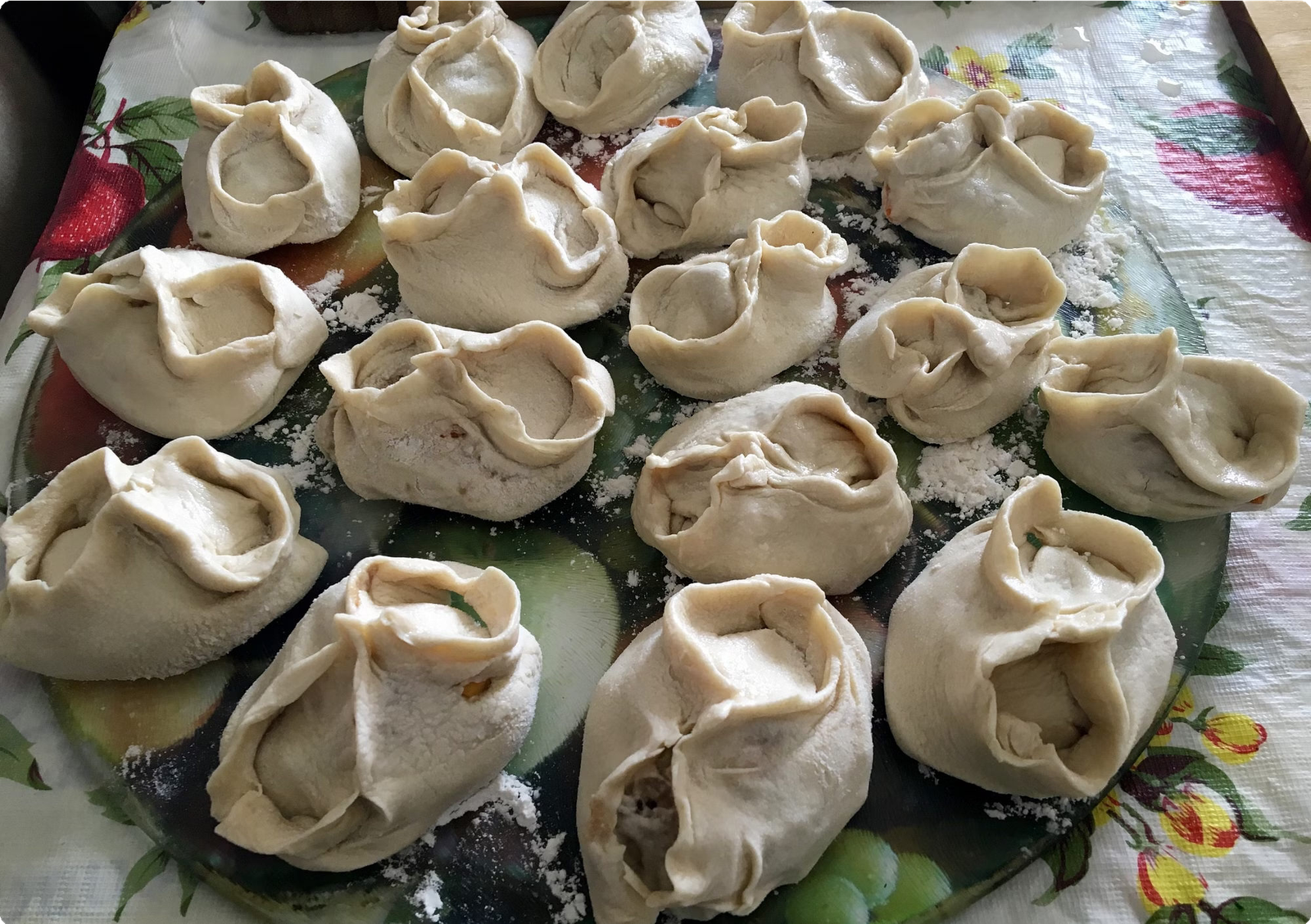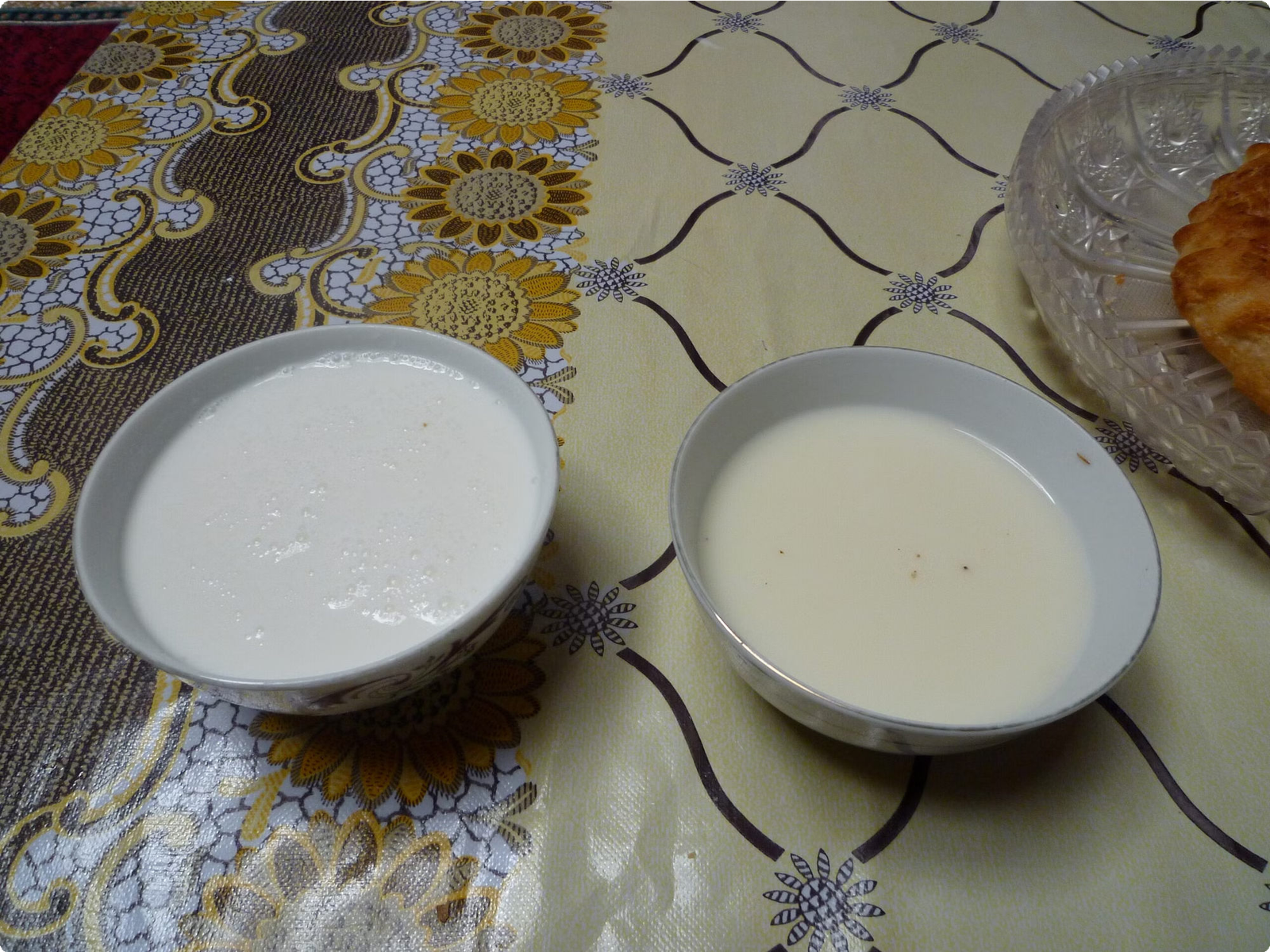Turkmenistan
Discover Turkmenistan
Turkmenistan, located in Central Asia, is a country with a rich history and diverse cultural heritage. Known for its stunning landscapes, including the Karakum Desert and the Kopet Dag mountain range, Turkmenistan offers a unique blend of natural beauty and ancient wonders. The capital city, Ashgabat, is renowned for its opulent architecture and fascinating museums, providing a glimpse into the country’s illustrious past. With a population known for its warmth and hospitality, Turkmenistan is a fascinating destination for travelers seeking to explore a land steeped in tradition and charm.

Visitors to Turkmenistan can immerse themselves in the vibrant culture and traditions, experiencing the art of traditional Turkmen dance, savoring the flavors of authentic Turkmen cuisine, and marveling at the intricacies of Turkmen craftsmanship. Whether it’s the renowned Akhal-Teke horse breed or the iconic Turkmen carpet, the country’s cultural offerings are as diverse as they are captivating.
Flag and National Symbols
Turkmenistan’s flag consists of a green field with a vertical red stripe near the hoist side, containing five carpet guls, a traditional design element. The green represents Islam and the agriculture of the country, while the stripe symbolizes the historical appellation of the country, “The Heart of Asia.” The five guls represent the five major tribes of Turkmenistan. The flag is rich in symbolism, reflecting the country’s heritage and values.

In addition to the flag, Turkmenistan also has a national emblem, with a similar color scheme and designs that represent the natural and cultural aspects of the country. It includes famous buildings, a cotton plant, and a crescent moon. These national symbols hold deep significance for the people of Turkmenistan and serve as a source of pride and unity.
Geography and Map of Turkmenistan
Turkmenistan, located in Central Asia, is bordered by Kazakhstan to the northwest, Uzbekistan to the north and east, Afghanistan to the southeast, and Iran to the south. The Caspian Sea lies to the west. The country comprises vast deserts, including the Karakum Desert, and the Kopet Dag mountain range is located in the south. The Amu Darya and Murghab rivers flow through the country, contributing to the diverse landscape.

The map of Turkmenistan showcases its unique position as a landlocked country with strategic neighbors and access to the Caspian Sea. The geography plays a key role in the nation’s culture, economy, and history, making it an intriguing subject to explore.
Brief History of Turkmenistan
Ancient Civilizations
Turkmenistan has a rich history dating back to ancient civilizations. It was part of the Parthian and Sassanian empires, and its strategic location along the Silk Road made it a vibrant hub of trade and cultural exchange.
Russian Influence and Soviet Era
In the 19th century, Turkmenistan fell under Russian rule and later became a Soviet republic. This period saw significant social, political, and economic changes that have left a lasting impact on the country.
Independence and Modern Era
Turkmenistan gained independence in 1991 following the collapse of the Soviet Union. This marked a new chapter in its history, characterized by efforts to preserve its cultural heritage while pursuing development and global engagement.
Government and Politics
Government Structure
Turkmenistan is a presidential republic with a dominant-party system. The president is both the head of state and the head of government. The executive branch includes the president, the cabinet of ministers, and the presidential administration. The legislative branch consists of the Mejlis, a unicameral parliament, while the judicial branch is headed by the Supreme Court.
Political Landscape
The Democratic Party of Turkmenistan has held a dominant position in politics since the country’s independence. The political system is highly centralized, and the president exercises significant control over all branches of government. Despite this, Turkmenistan has shown a commitment to developing its political institutions and engaging in international diplomacy.
The country’s foreign policy has focused on maintaining a policy of neutrality and non-alignment, a stance recognized by the United Nations in 1995. This neutrality has allowed Turkmenistan to remain free from entanglements in international conflicts and to pursue its economic and developmental goals.
Economy of Turkmenistan
Turkmenistan’s economy is largely dependent on its natural resources, particularly natural gas and oil. The country holds the world’s fourth-largest natural gas reserves, making it a significant player in the global energy market. The energy sector, including extraction, processing, and export of natural gas, forms the backbone of Turkmenistan’s economy.

In recent years, Turkmenistan has also focused on diversifying its economy, with a growing emphasis on industries such as textiles, agriculture, and construction. The country has made investments in modernizing its infrastructure and developing its manufacturing capabilities. Additionally, Turkmenistan has been actively promoting tourism, aiming to tap into its rich cultural heritage and historical sites as a source of economic growth.
The government plays a central role in the economy, with a significant proportion of enterprises and resources being state-owned. Employment opportunities are largely provided by the public sector, although there are efforts to encourage private entrepreneurship and foreign investment.
Currency and Exchange Rates
Turkmenistan’s Currency: The official currency of Turkmenistan is the Turkmenistan manat (TMT).

Exchange Rates: The exchange rate as of [current date] is approximately 3.5 TMT to 1 USD. It’s important to check with local banks or currency exchange offices for the most accurate rates.
Accepted Currencies: While US dollars are widely accepted, it’s recommended to exchange some currency to the local manat for smoother transactions, especially in local markets and smaller towns.
Major Industries and Exports
Natural Gas
Turkmenistan is known for its abundance of natural gas reserves, making it one of the world’s top natural gas producers. The country has been able to leverage its natural gas resources to build a strong economy and establish itself as a key player in the global energy market.
Cotton Production
Cotton is an important industry in Turkmenistan, with the country being one of the world’s major cotton producers. The fertile plains of Turkmenistan allow for the cultivation of high-quality cotton, which is an important export commodity for the country.
Textile Industry
With its abundant cotton resources, Turkmenistan has a thriving textile industry. The country produces a wide range of textile products, including clothing, home textiles, and industrial textiles, which contribute significantly to its exports.
Oil Refining
In addition to natural gas, Turkmenistan also has significant oil reserves and a well-developed oil refining industry. The country processes its crude oil to produce petroleum products for both domestic consumption and export.
Traditional Turkmen Culture
Wedding Rituals
In Turkmen culture, weddings are vibrant and colorful events, symbolizing the union of two families. The traditional wedding attire and intricate ceremonies reflect the rich cultural heritage and deep-rooted customs of the Turkmen people.

Carpet Weaving Tradition
Carpet weaving holds significant cultural importance in Turkmenistan. The intricate patterns and vivid colors of Turkmen carpets are a testament to the skill and craftsmanship of the artisans, with each design often representing a unique story or symbol.
Traditional Music and Dance
Music and dance play a central role in traditional Turkmen culture. The melodic tunes of instruments like the dutar and tambur, accompanied by vibrant dances, express the joy, sorrow, and spirit of the Turkmen people.
Traditional Attire
The traditional clothing of Turkmenistan reflects the cultural diversity and historical influences of the region. From the elegant robes of the women to the distinctive hats and coats of the men, each garment embodies the heritage and identity of the Turkmen people.
Turkmenistan’s National Cuisine
Turkmen cuisine is known for its rich flavors and diverse influences, blending elements from Central Asian, Middle Eastern, and Mediterranean culinary traditions. The use of lamb, rice, and a variety of fresh herbs is prevalent in Turkmen dishes. One of the most iconic dishes is “Palaw,” a fragrant rice pilaf featuring succulent pieces of meat and aromatic spices, often served with a side of yogurt.

Another popular dish is “Gozleme,” a savory flatbread filled with minced meat, spinach, or pumpkin. The Turkmen people also have a penchant for flavorful soups such as “Shurpa,” a hearty and nourishing soup made with lamb, vegetables, and herbs.
For desserts, “Chak Chak,” a sweet pastry made from dough and honey, is a beloved treat. The culinary heritage of Turkmenistan reflects a vibrant tapestry of flavors and traditional cooking techniques, making it a delightful experience for food enthusiasts.
Famous Turkmen Dishes and Drinks
Turkmen Manty
Turkmen Manty is a traditional dish made of steamed dumplings filled with minced meat and onions. The dough is rolled out thin and the dumplings are folded into intricate shapes, making it not only delicious but visually appealing as well. It is often accompanied by yogurt or a tomato-based sauce and is a favorite comfort food among Turkmen people.

Chal
Chal is a fermented camel’s milk, a celebrated beverage in Turkmenistan. It is known for its unique tangy taste and is often consumed for its numerous health benefits. Chal is a staple in Turkmen cuisine and is enjoyed by locals and visitors alike.

Palaw
Palaw is a popular rice dish cooked with fragrant cumin, carrots, and meat such as lamb or beef. It is a staple at festive occasions and family gatherings, symbolizing hospitality and abundance. The aromatic flavors and hearty texture make Palaw a beloved dish in Turkmen culture.

Turkmen Music and Dance
Traditional Instrumental Music
Turkmenistan has a rich tradition of instrumental music, with the dutar, gyjak, and gopuz being popular traditional string instruments. The melodious tunes of these instruments, often played during cultural celebrations and gatherings, reflect the deep-rooted musical heritage of the Turkmen people.
Folk Dance Traditions
Folk dances like Lezgi, Yyl (or Halay), and Kushtdepdi are integral to Turkmen cultural events. The vibrant and energetic movements of these dances convey stories of love, nature, and everyday life, showcasing the unity and camaraderie of the Turkmen community.

Popular Turkmen sports and games
Turkmen Horse Racing
Horse racing is a beloved and time-honored sport in Turkmenistan, deeply rooted in the country’s equestrian traditions. Turkmen horse racing events often feature skilled horsemen showcasing their expertise in traditional attire, as they compete in various distances and terrains, from desert flatlands to grassy steppes.

Göreş Wrestling
Göreş, a style of belt wrestling, holds a significant place in Turkmen culture and sports. This age-old wrestling tradition involves competitors engaging in rigorous matches, showcasing their strength, agility, and strategic prowess while maintaining the spirit of camaraderie and respect.

Turkmenistan’s National Holidays and Festivals
Nowruz Festival
Nowruz, meaning “new day,” is a significant festival celebrating the arrival of spring and the beginning of the new year in Turkmenistan. It is marked with colorful street celebrations, traditional folk dances, and the gathering of families to share meals and exchange gifts. The festival reflects the rich cultural heritage and the spirit of renewal and hope within the Turkmen community.
Turkmen Horse Racing Festival
The Turkmen Horse Racing Festival is a traditional event that highlights the deep appreciation for horse breeding and equestrian skills in Turkmen culture. Spectators and participants gather to witness thrilling races, adorned with vibrant traditional costumes and captivating displays of horsemanship, showcasing the historical significance and reverence for the majestic Turkmen horse.
Independence Day Celebration
Independence Day in Turkmenistan commemorates the country’s liberation from the Soviet Union with grand festivities, including vibrant parades, cultural performances, and fireworks. It is a time for Turkmen people to reflect on their nation’s journey to independence and to express their pride in their heritage and unity as a sovereign state.
Famous Turkmen Celebrities
Gurbanguly Berdimuhamedow
Gurbanguly Berdimuhamedow is the current president of Turkmenistan. He has served as the country’s leader since 2007 and has been a key figure in shaping the nation’s political landscape. Known for his distinctive leadership style, Berdimuhamedow has played a significant role in the development and modernization of Turkmenistan.

Anastasiya Prenko
 Anastasiya Prenko is a talented Turkmen tennis player who has made significant contributions to the sport. With her exceptional skills and dedication, Prenko has represented Turkmenistan in various international tennis tournaments, showcasing her country’s presence in the world of sports.
Anastasiya Prenko is a talented Turkmen tennis player who has made significant contributions to the sport. With her exceptional skills and dedication, Prenko has represented Turkmenistan in various international tennis tournaments, showcasing her country’s presence in the world of sports.
Best cities to visit in Turkmenistan
When visiting Turkmenistan, there are several cities that offer unique cultural experiences and breathtaking attractions.

Ashgabat, the capital city, is known for its impressive modern architecture, including the grandiose Independence Monument and the opulent Presidential Palace. The city’s bustling Tolkuchka Bazaar is a vibrant display of local life and trade.
Mary, an ancient Silk Road city, boasts historical sites such as the extravagant history museum and the mesmerizing Gonur Depe archaeological site. Strolling through the city’s streets feels like a journey through time.
Turkmenbashi, the Caspian Sea port, captivates visitors with its tranquil beaches and the impressive
Turkish-style Turkmenbashi Ruhy Mosque. The city’s maritime atmosphere provides a serene contrast to the bustle of inland locations.
Ashgabat, the capital city
Ashgabat, the capital city of Turkmenistan, is known for its modern architecture, gleaming white marble buildings, and wide boulevards. The city’s stunning skyline showcases a blend of traditional Turkmen culture and contemporary design. Visitors can explore the impressive monuments, museums, and mosques, each reflecting the rich history and heritage of the region.

The city’s bustling bazaars offer a vibrant display of local crafts, textiles, and traditional arts, providing a glimpse into the vibrant culture of Turkmenistan. Ashgabat is also home to an array of parks and green spaces, adding natural beauty to its urban landscape. Whether wandering through the vibrant city center or admiring the stunning views from the surrounding hills, Ashgabat offers a captivating experience for travelers.
Mary, the ancient Silk Road city
Mary, located in Turkmenistan, holds historical significance as it was a prominent city along the ancient Silk Road. This bustling city has witnessed the convergence of diverse cultures, trade, and ideas, shaping its unique character.

The city boasts a rich heritage, with remnants of ancient architectural marvels, inviting travelers to explore its well-preserved archaeological sites. Visitors can immerse themselves in the captivating history of Mary and envision the vibrant commercial activities that once thrived in this ancient trading hub.
Turkmenbashi, the Caspian Sea Port
Turkmenbashi, also known as Krasnovodsk, is a city located on the eastern coast of the Caspian Sea. This port city serves as an important industrial and transportation hub for Turkmenistan, with a focus on the country’s maritime activities. The city is named after the first President of Turkmenistan, Saparmurat Niyazov, who adopted the name Turkmenbashi, meaning “Leader of the Turkmens”.

With its strategic location on the Caspian Sea, Turkmenbashi plays a crucial role in the export and import of goods, connecting Turkmenistan to international markets. The city’s port facilities and maritime infrastructure support the country’s trade and economy, making it a key player in Turkmenistan’s global interactions.
Kunya-Urgench, the UNESCO World Heritage site
Kunya-Urgench, located in northern Turkmenistan, is a UNESCO World Heritage site recognized for its exceptional historical and architectural significance. The ancient city was a prominent center of Islamic culture and trade along the Silk Road, boasting magnificent monuments, mausoleums, and minarets.

The preserved ruins and structures in Kunya-Urgench offer a glimpse into the region’s illustrious past, with its remarkable blend of Seljuk, Persian, and Islamic architectural styles. Visitors can explore the awe-inspiring mausoleums of the Turabek-Khanym, Gutlug-Timur, and Sultan Tekesh, as well as the imposing Kutlug-Timur Minaret that dates back to the 12th century.
Darvaza Gas Crater, the “Door to Hell”
The Darvaza Gas Crater, also known as the “Door to Hell,” is a surreal and mesmerizing natural phenomenon located in the Karakum Desert of Turkmenistan. This expansive crater has been burning continuously for over five decades, emitting a fiery glow that lights up the surrounding desert landscape. The origin of the crater dates back to a natural gas field collapse in 1971, leading to the decision to set it on fire to prevent the spread of methane gas. Since then, it has become a popular attraction for adventurous travelers and researchers alike.

Visitors are captivated by the ethereal spectacle of the burning crater against the dark desert backdrop, particularly at night when the flames create a striking contrast with the starry sky. The experience of witnessing the natural inferno is truly awe-inspiring and has made the Darvaza Gas Crater an iconic landmark in Turkmenistan’s diverse landscape.
Yangykala Canyon, the “Grand Canyon of Central Asia”
Yangykala Canyon, located in the western part of Turkmenistan, is often referred to as the “Grand Canyon of Central Asia” due to its striking resemblance to the famous Grand Canyon in the United States. The canyon showcases a mesmerizing display of colorful rock formations, spanning from deep reds to bright oranges and yellows, carved out by the winds and streams over millions of years.

The dramatic cliffs of Yangykala Canyon stand out against the vast desert landscape, creating a stunning contrast that attracts adventurers, nature enthusiasts, and photographers from around the world. Visitors can explore the canyon’s unique geological features, including natural rock sculptures and deep ravines, while experiencing the untouched natural beauty of the region.
Merv, the “Queen of the World”
Merv, also known as Margiana, is an ancient city located in present-day Turkmenistan. It holds great historical and cultural significance, earning the title “Queen of the World.” The city was a key center of the Silk Road trade route and is adorned with well-preserved architectural gems, including impressive fortifications, palaces, and mausoleums.

Visitors to Merv can explore the remains of the ancient city, immersing themselves in the rich history and marveling at the intricate designs and structures. The site offers a glimpse into the bygone era, providing a fascinating insight into the once-thriving civilization that flourished in the region.
Nohur, the mountain village of the Yomut tribe
Nohur is a picturesque mountain village located in Turkmenistan, known for its stunning natural beauty and rich cultural heritage. The village is nestled in the mountains and is home to the Yomut tribe, who have preserved their traditional way of life for generations.
The architecture of Nohur reflects the traditional Turkmen style, with unique stone houses and winding cobblestone pathways. The village offers breathtaking views of the surrounding mountains and is a haven for hikers and nature enthusiasts.

Visitors to Nohur can immerse themselves in the local culture, experiencing the warm hospitality of the Yomut people and enjoying traditional folk music and dance performances. The village is also renowned for its vibrant craft market, where visitors can purchase beautifully handcrafted textiles and pottery.
Tips for Traveling to Turkmenistan
If you’re planning a trip to Turkmenistan, there are a few important things to keep in mind to ensure a smooth and enjoyable travel experience. First and foremost, it’s essential to research and understand the visa requirements for your specific nationality. Turkmenistan has specific visa regulations, and obtaining the necessary documentation in advance is crucial.
Additionally, it’s important to respect the local customs and traditions. Turkmenistan is known for its rich cultural heritage, and visitors should be mindful of dress codes, etiquette, and cultural sensitivities.
Engaging with the local community and participating in cultural activities can enhance the travel experience and create memorable interactions.
Furthermore, when traveling within Turkmenistan, it’s advisable to use reputable and licensed tour operators to ensure safe and reliable transportation. It’s also recommended to carry sufficient cash, as credit card acceptance may be limited in certain areas. Lastly, familiarizing yourself with the local currency and exchange rates can help manage expenses effectively during the trip.
For adventurous travelers, exploring Turkmenistan’s diverse landscapes, from the vast Karakum Desert to the unique geological formations, promises unforgettable experiences. Whether visiting historic sites, admiring architectural wonders, or immersing in natural wonders, Turkmenistan offers a blend of heritage, hospitality, and adventure for every traveler.